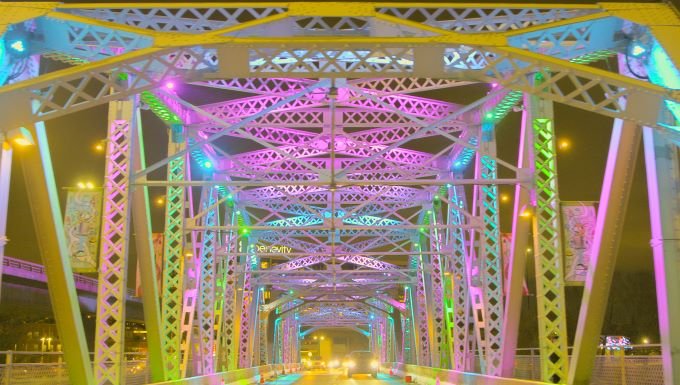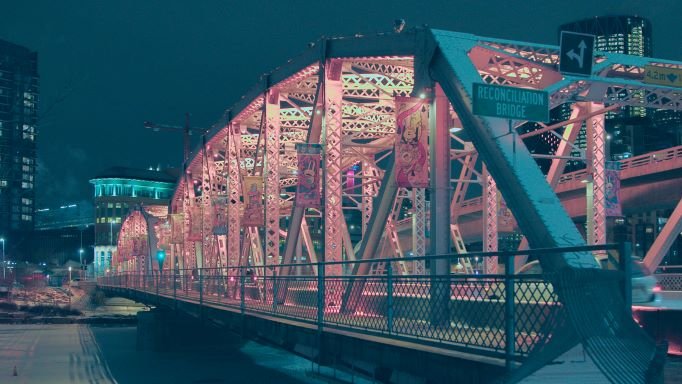Indigenous Stories Illuminate Reconciliation Bridge
If you’ve strolled along the river lately, you may have noticed that Reconciliation Bridge is shining a little brighter these days.
The 100s of LED lights that line the bridge were due to be upgraded this year and while the bridge got fancy new lights that dazzle, more fittingly it also got a new lighting program that focuses on Indigenous stories.
Reconciliation Bridge was renamed from Langevin Bridge in 2017 in a City-led process of healing and public truth sharing and as an act of reconciliation. Now, the bridge lighting program appropriately showcases the important stories that reflect the Indigenous worldview and support the ongoing reconciliation and healing that’s so important for our city.
Based on collaboration and input from the City of Calgary’s Indigenous Relations Office, the lighting patterns will pay tribute to significant dates in the annual lighting calendar. Throughout the year, you’ll see for example changing lighting patterns that honour national days of awareness and action for Murdered and Missing Indigenous Women and Girls, National Aboriginal Awareness Week, Métis Week and the National Day for Truth & Reconciliation. The lights will also display patterns that evoke elements of Indigenous culture such as the medicine wheel. Starting tonight, and for the next six nights, the bridge will be lit in the beadwork lighting show.
Beadwork lighting show on Reconciliation Bridge
The craft and artform of beadworking is an important part of Indigenous culture. Often in vibrant colours, stories, knowledge and important themes are expressed through line patterns, shapes and figures. Beads are often used to adorn regalia, clothing, moccasins and jewelry, and, for many, are representative of the values of reciprocity, interconnectedness, respect, balance and sharing.
When you look out at the bridge this week, you’ll see that each light is intended to represent an individual bead. Lit in alternating primary colours with the angled truss bracing reminiscent of thread sewing patterns, it appears as though the bridge is literally being stitched together.
Other Indigenous stories will be shared through the bridge lighting program throughout the year, including repeated cycles that that reflect the change of seasons, the solstices and equinoxes and the moon’s natural cycle.
The two solstices and equinoxes are important days of the year that mark our journey around the sun and its affect on the land and people. Tied into these dates are the four directions of the medicine wheel, which also correspond to the four seasons demarcated by the solar calendar. Each night before a solstice or equinox the bridge will be illuminated with all four colours of the medicine wheel; each night of a solstice or equinox the specific medicine wheel colour associated with the upcoming season shall take over. This repeating cycle of illumination will help us visually connect with the solar year and ground ourselves into the seasons.
The moon’s natural cycle recurs monthly and holds special significance to Indigenous cultures. To help draw attention to the lunar cycle, a special lighting scene is scheduled for the 3-day period around the full moon. At sunset the bridge will be lit with a warm white – almost amber – colour and over the course of the night the white will shift to a cool bright hue before returning to a warm white again, mimicking the colour transformation of the moon itself.
Did you know? You are welcome to request lighting tributes to recognize charity events, community milestones, and city events and festivals, provided they don’t conflict with any pre-planned Indigenous-focussed lighting programs. Learn more here.




